Invasive species: they’re everywhere. And you could be inadvertently spreading them while you’re outside having fun, working around the yard, or even doing your holiday shopping.
While attending the recent Upper Midwest Invasive Species Conference, I was struck at some of the strange ways invasive species get spread. Oftentimes, we have only our bad choices to blame – introducing new infestations and causing damage to native ecosystems, agriculture and human health in the process.
Some reasons invasive species spread are hopefully relegated to the past. But others are still spreading due to our decisions. Making slight alterations in behavior, you can make a huge difference for conservation.
Here are 10 of the unusual ways invasives can be spread. There are many more – leave your own additions in the comments.
-
Running Shoes
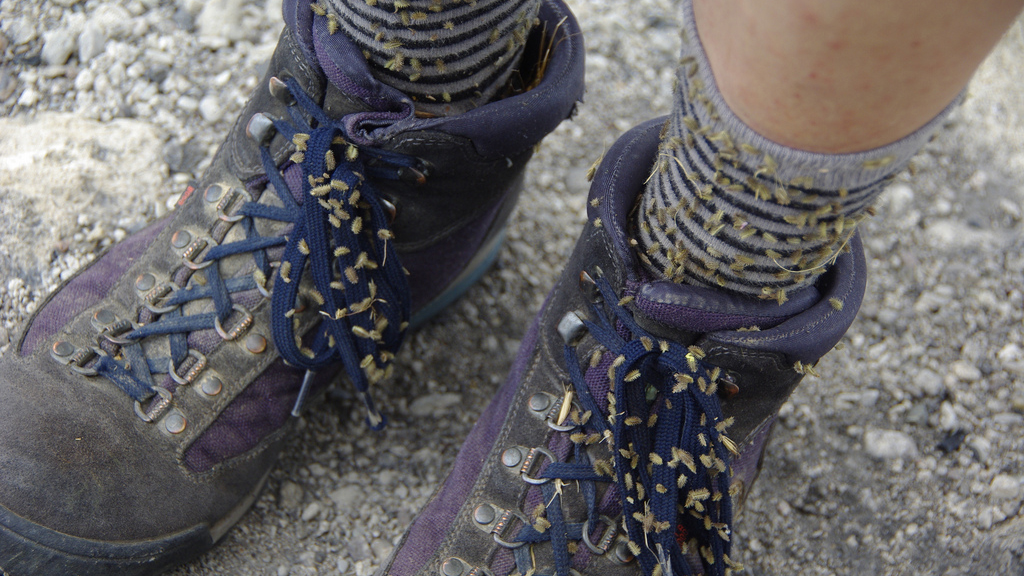
Shoes covered in weed seeds. Photo © Martin Lopatka / Flickr through a Creative Commons license You’re out running the hills after a hard day’s work, enjoying the fresh air and beautiful scenery. You’re in a zone, so you don’t notice when your shoe brushes against a patch of weeds. The next day, you fly to a meeting, running shoes in your luggage.
The next day you go for a run several states away, and dropping weed seeds along the way. The weeds have just spread far faster than your running pace.
Running shoes aren’t the only culprit. Fungal spores transported by caving equipment led to the spread of the deadly white-nose syndrome in bats. Bikes, ATV’s, boats, fishing equipment, clothing and other outdoor gear all are prime ways to transport weed seeds – infesting the places you love to recreate.
What You Can Do: Clean your outdoor gear after each outing, especially if you are moving it to a new area. The Play-Clean-Go campaign offers excellent tips to “stop invasives in your tracks.”
-
Aquariums and Backyard Ponds
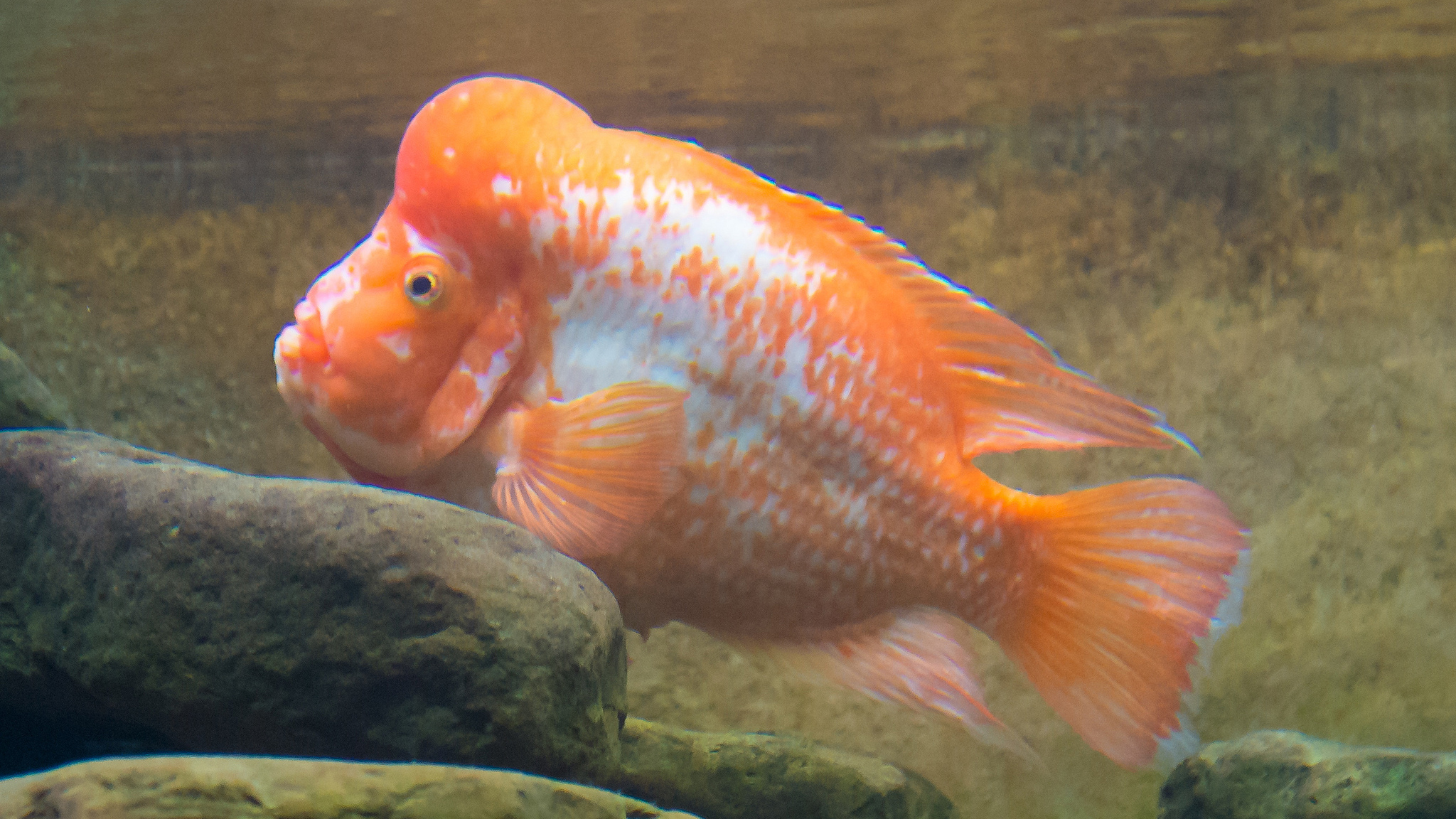
Amphilophus citrinellus (Midas cichlid). Photo © mark6mauno / Flickr through a Creative Commons license Your aquarium might seem like a contained system. But a long list of aquatic invaders originated from pets and plants kept in personal aquaria or backyard ponds.
Some people tire of tropical fish and think the best thing to do is set their pets free. This has led to non-native fish invasions in many places (the waters of Everglades National Park, for instance, are filled with exotic cichlids, walking catfish and others). Backyard ponds can flood into nearby streams or rivers, taking invasives with them. And when aquarium plants are cleaned up, the disposed plant material can contain seeds that spread.
What You Can Do: Don’t set pets (of any kind) free, ever. At best, it’s inhumane, and at worst you’ve introduced an invasive species. Dispose of aquatic plants in plastic bags. The Reduce Invasive Plant and Pet Escapes (RIPPLE) campaign offers many resources to responsibly take of care of your aquarium’s residents, without causing the next aquatic nuisance.
-
Firewood

Heating your home or cabin with wood when properly sourced (locally harvested or heat treated!) is an inexpensive and efficient way to get through the cold months. Infographic © Don’t Move Firewood This one may not be surprising due to the wildly successful Don’t Move Firewood campaign. But it bears repeating. Oftentimes, dead or dying trees are cut to sell for home firewood use or camping. These trees may be dying due to forest pests.
When you move firewood long distances, you can be transporting a host of nasties, including the emerald ash borer and Asian longhorned beetle. These pests exact a heavy toll on our forests. Don’t help move them into new areas.
What You Can Do: Buy it where you burn it. Support local firewood providers and don’t move wood around. The Don’t Move Firewood campaign can help – and they have really great graphics and videos to help spread the word on social media.
-
Artificial Christmas Trees

Artificial trees on display at Bronners Christmas Wonderland, Frankenmuth, Michigan. Photo © Ken Lund / Flickr through a Creative Commons license Cutting a live holiday tree and moving around could pose the same threats to forests as firewood. But artificial trees actually can hold their own pests.
Many artificial trees have wooden bases, and they’re often manufactured in China. Some surprised customers have opened their tree box and found beetles or grubs. These turned out to be brown fir longhorn beetles, a species with the potential to wreak havoc on native trees. Since 1999, 20 brown fir longhorn beetles have been reported in artificial trees. When this happens, all the trees in that shipment have to be tracked down and incinerated.
What You Can Do: In a global society, species move around. Having better invasive species protocol for imported goods is vital. But you can play a role: if you see an unusual creature in something you’ve bought, report it.
-
Leaf Piles
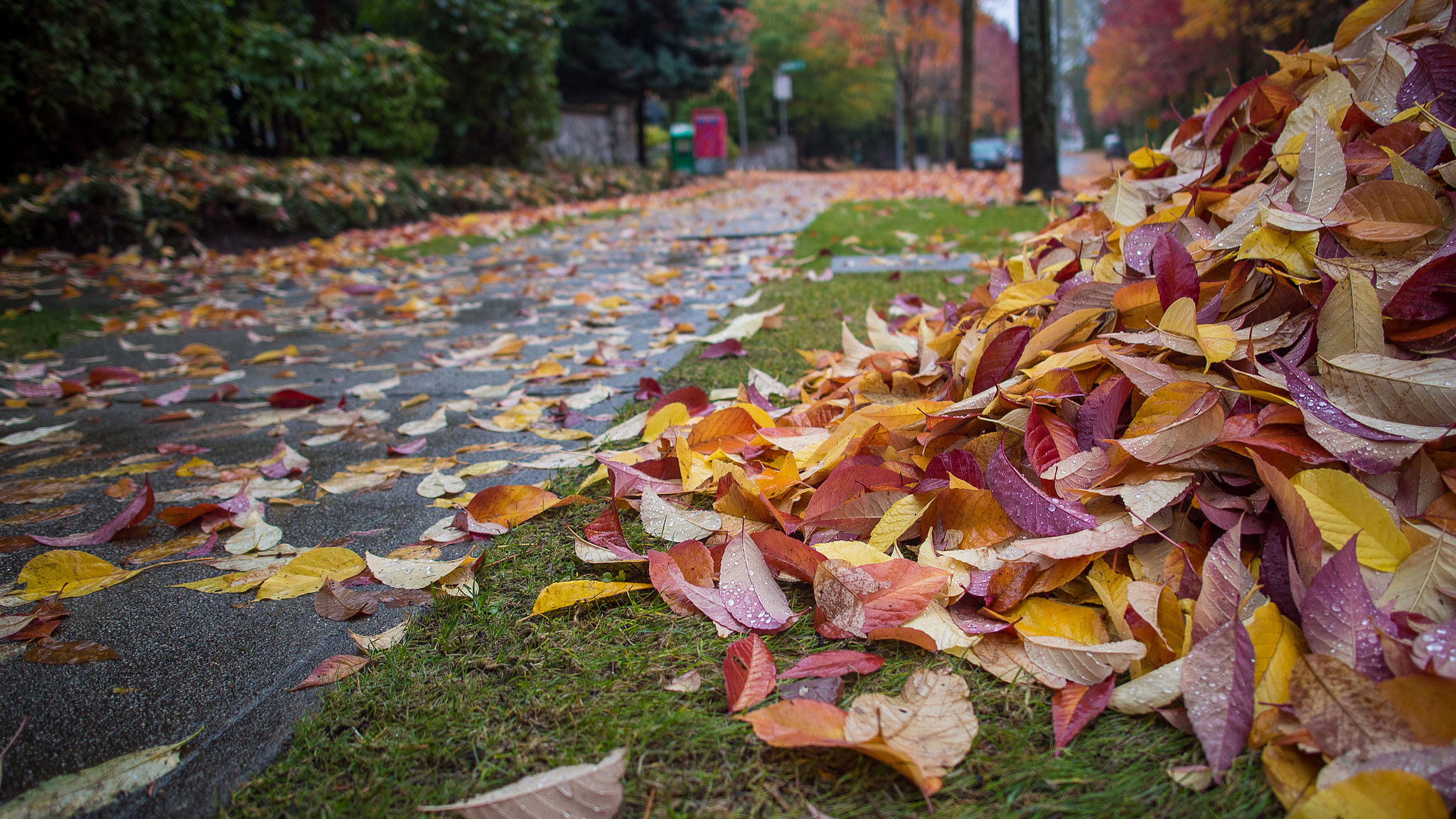
Fall leaves. Photo © Kenny Louie / Flickr through a Creative Commons license Many of us are raking our backyards right now, piling up leaves to be carried away or composted. Those leaf piles are fun to jump into, but they may also be harboring a nasty invasive worm.
Asian jumping worms churn through leaf litter in northern forests, altering biodiversity and soil chemistry. These worms live along the surface, in leaf litter, and lay their eggs there. Their cocoons are difficult to notice so they may end up in a leaf pile. When those leaf piles are bagged and transported away, the worm spreads.
What You Can Do: Adult Asian jumping worms are quite distinctive (see my previous blog for photos and video). The cocoons, though, are so tiny that they’re impossible to find. However, if you buy compost, make sure it has been heat treated to kill any pests.
-
Fishing Bait
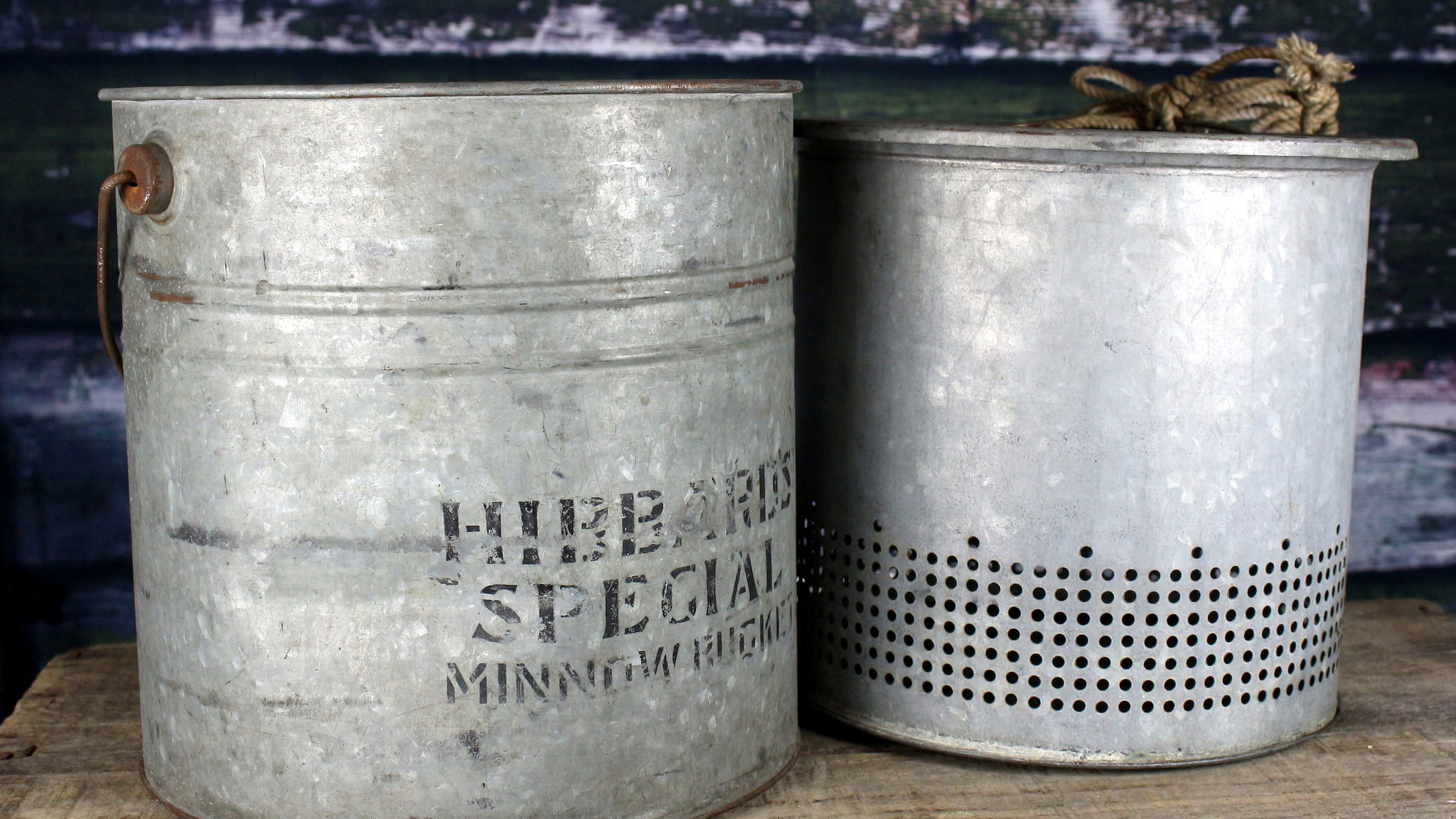
Vintage bait buckets. Photo © Cindy Shebley / Flickr through a Creative Commons license A fishing pole, a bobber and a worm: the archetypal image of a lazy summer day. But those worms are often non-native species. And it’s not just worms: many minnows and crayfish used for bait can also become invasive.
At the end of a fishing session, some anglers dump their bait into the water. Such an action could change their favorite fishing hole forever.
What You Can Do: Some states regulate the use of bait to native species, a wise policy. But whatever your state regulations, don’t dump your bait after you’re done fishing. Dispose of it away from water.
-
Truckloads of Pigs
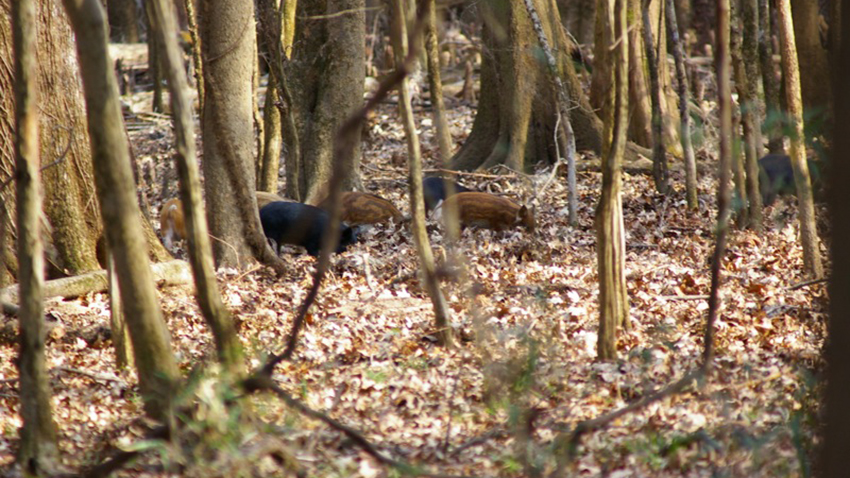
Feral pigs in Congaree National Park. Photo © Duane Burdick / Flickr through a Creative Commons license Feral hogs have made a dramatic spread over the past 25 years. Yes, they are tenacious and adaptable, but they haven’t spread into the Midwest, the Great Plains and parts of the Rockies on their own. They’ve had help – often from hunters who believe having pigs around would be a nice addition to the game list.
Numerous pig infestations have occurred when a local hunter and fenced hunt operator imports a truckload of feral pigs from another state. Hogs root up ground-nesting birds, native plants, mushrooms, reptiles and farms. Once established, they’re tough to stop.
What You Can Do: I suspect if you are loading up a truck with feral hogs, you’re not reading this blog. But all of us can report hog sightings. And hunters can clean up our act. Hunting shows and outdoor magazines often trumpet that hunters are the best line of defense against feral hogs. The truth is, hunters are the ones spreading them around. I’m a hunter. I’ve hunted hogs. But let’s be clear: hunters are causing this problem and it’s up to us to fix it.
-
Over-Abundant White-tailed Deer

The recovery of white-tailed deer populations is a stunning conservation success. But is it too successful? Photo © The Nature Conservancy (Matt Miller) Many ecologists consider white-tailed deer to be a bigger threat to the eastern forest than climate change. Deer clear the forest of undergrowth, leaving a lot of disturbed soil. Invasive plants thrive in disturbed soil.
White-tailed deer also don’t eat invasives, so it creates a cycle: the deer eat natives, creating space for non-native plants. The deer then focuses on the remaining native species, creating even more room for invasives.
What You Can Do: Unlike others on the list, this one may not seem like a direct human impact. But the over-abundant whitetail population is a direct result of human intervention. Hunters want more deer. Animal rightists don’t want to kill deer. This overprotection of the deer herd has many consequences, of which invasive plants are just one. All of us have a responsibility to advocate for community-based deer management and lower herd numbers.
-
Tourist Attractions
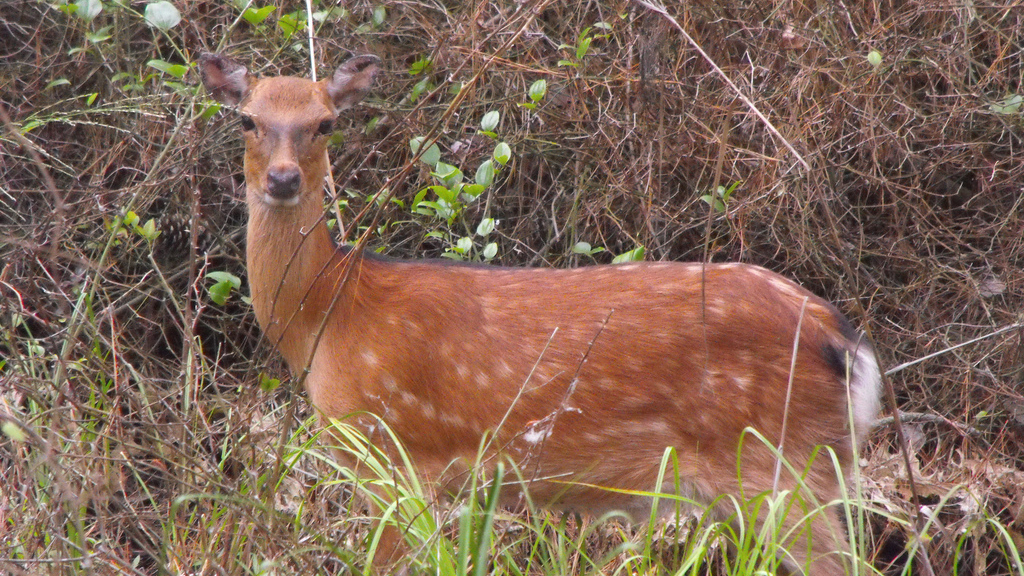
A sika deer at Chincoteague National Wildlife Refuge / Assateague Island National Seashore. Photo © Emma Kerr/USFWS In the early 1900s, a Maryland Boy Scout troop came up with a novel fundraising idea: They’d feature an exotic animal as a boardwalk attraction at nearby Ocean City. They chose sika deer, an Asian species that resembles a miniature elk.
They earned enough money to take a trip, but soon they found the novelty faded, and feeding expenses exceeded revenue. The troop took the sika deer to Assateague Island and released them. The animals still roam that island and surrounding areas.
What You Can Do: Presumably, you aren’t going to use exotic deer for your youth group fundraiser. But no matter what the circumstance – including unwanted pets – do not release animals into the wild. It probably won’t live a happy and free life as you imagine. And if it does, the results for society could be worse.
-
Shakespeare
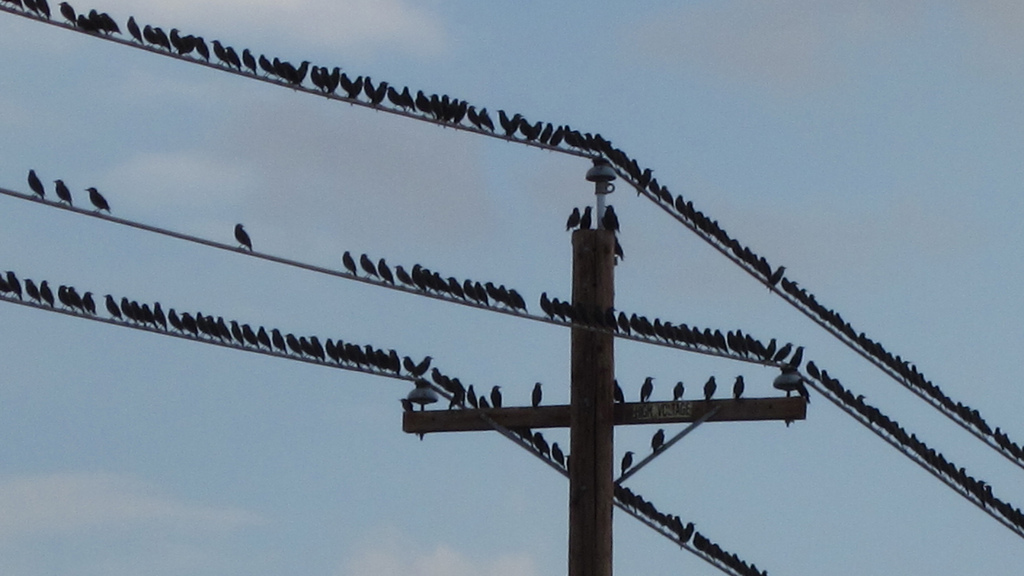
A multitude of European starlings in California. Photo © David Prasad / Flickr through a Creative Commons license It’s one of the most notorious of all invasive introductions. In the late 1800s, a group called the American Acclimatization Society undertook an ambitious if idiotic project: to introduce every bird mentioned in Shakespeare. All 600 of them.
Enterprising member Eugene Schieffelin chose the European starling as his personal project. True, the starling appears only once in Shakespeare, and not in one of his more famous works (Henry IV, Part 1). Nonetheless, Schieffelin was wildly successful in his introduction. So successful that starlings now swarm the North American continent.
What You Can Do: I’d like to think that species introductions like this are in the past. But it is dismaying just how many invasive introductions began with someone wondering, “Wouldn’t it be cool if we had [insert favorite species] here?” The correct answer: “No, it would not be cool at all, and future generations will hate you for it.” In our world of easy transport and global trade, invaders move around easily enough. Don’t add to it by intentional introductions.




Well said. Thank you for sharing this important information and kudos for adding tips and offer suggestions. Much appreciated.
Thanks for explaining how invasive species could be spreading. I actually didn’t know that firewood could be used to spread this, so you should make sure that you buy from firewood providers. I wonder if this is because the firewood is treated in some special way. https://abinvasives.ca/invasive-species/
Glad that your website took up the “jumping worm”. I found it in a google search. But when I got to your website, I couldn’t find your article again. cgs.go-vip.net doesn’t have a “Search” function.
Florence
Hi Florence, Thank you for the comment! I think this is the jumping worm post you were looking for: https://blog.nature.org/2016/10/31/jumping-worm-the-creepy-damaging-invasive-you-dont-know/ Also, we do have a search function, you can click on the magnifying glass icon in the top right corner of the page to open the search bar.
Matt,
Fabulous article and funny! I’m teaching a section in Science about Food Chains, ecosystems etc right now. We’re now researching various invasive species in our city and state…Milwaukee, WI. I look forward to sharing your list with my students!
Wolves and other predators are the best natural means of ensuring health herds, and maintaining the optimal ecological balance. Ensure that all species, especially keystone predators maintain healthy populations to ensure a healthier overall ecosystem
I used to work for TNC (Palmyra). I live in N California, the Farallon Islands are local and infested with mice (https://blog.nature.org/2015/12/15/miracle-palmyra-rats-birds-recovery-restoration-invasive-species-hawaii-nature-wildlife/) — I am the wrong guy to be doing this, and consequently birds are dying (they’ve been dying for decades) Even though the Farallones Nation Wildlife refuge brought in $1.15B dollars last year– it doesn’t seem to matter that one of the most important seabird rookeries is now a virtual death trap for birds– the poison works, but there will be by-kill, mostly birds- some of which will fly the 35 miles back to SF, and die a horrible death right there in the middle of the GG bridge, on TV, during rush hour…
NOAA admins the national wildlife refuge system– but the states manage them. The management there is — ummm — reluctant to take action. Island Conservation can almost see those islands from their offices– I need some help, but I don’t know what. Any ideas?
As someone from a Christmas tree farm (all local, retail, cut-your-own) it might be worth mentioning that this type of operation is sustainable and not spreading invasive species.
Thank you for the warnings. It is sad to say but we humans are noteworthy for enthusiastically welcoming both domestic and wild pet adoption, … and equally noteworthy for tiring of the effort involved in caring for these animals over the long term — and, sadly, often releasing these creatures into the “wild” when their care becomes onerous. That “wild” is often either unwelcoming- and lethal to the pet, or unsuitable for the environment/ecosystem which may be damaged by the abandoned pet’s behavior in its attempt to survive. Many of us have successfully “re-adopted” homeless animals we have found abandoned in our neighborhoods, but overall, such animals often die of neglect or are euthanized because of their bothersome need to find food or shelter in human-rich territory. They deserve better. Most of us recoil from the prospect of euthanizing a healthy animal but we do it no favors by adopting it, then neglecting its needs. Animal care is not for everyone, and we should assess carefully our ability to provide it — and, if not suitable, take a “found” animal to the nearest animal shelter or veterinary establishment. Seriously injured animals unsuitable for adoption should be humanely euthanized. And those of us who plan to adopt a “found” animal need to examine our motives and prepare ourselves properly for both the pleasure and annoyance any adopted living creature may visit upon us.
Very good information! However, my response involves a different situation namely the staggering amount of road kill. Small mammals especially raccoons, squirrels, woodchucks and to some degree red fox are routinely killed daily on highways not to mention deer also. These roads are “killing fields.” Much of this loss could be curbed by people who would be alert when driving for wildlife. Signs in areas where this frquently happens could help somewhat but are there any “REAL” studies that could help alleviate this horrible situation. Animals crave salt and winter finds salt in large degrees put on our roads then eventually swept to the sides and warmer weather prompts woodchucks especially tothesides of roads. Like to hear your thoughts on that.
Lee
this is so weird. i didn’t think i could be spreading invasive species on my shoes.
This is so weird. I didn’t know it was this serious
fascinating information — if only more people knew about all of this
Nice job! …However, how about an example of an invasive species carried by boaters? Thanks. –LM
Those starlings are such pests! They are dirty and bully the bird feeders. Here in Utah they are protected from harassment! What can be done about that??
We have a white tail deer problem in an urban area. Have you any suggestions/recommendations on how to initiate community-based management? Unfortunately, people think they are “cute” and my neighbor is feeding them. There is no hunting allowed in the community and, other locations have had opposition to culling operations (which need to be ongoing to have any success). I have yet to find anything that will discourage them from eating my landscaping and vegetables. There has been one deer-car interaction to the detriment of the deer earlier this year (I didn’t see the car so I don’t know how much damage to it).
Thanks for any info. (Oakland Co)
Hi Fran, Thank you for the question. I think you will be interested in the new Community Deer Advisor site from The Nature Conservancy and Cornell: http://deeradvisor.dnr.cornell.edu You can read our post about it here: https://blog.nature.org/2016/11/30/deer-advisor-help-community-grappling-abundant-deer-populations-management-advice/
Why do we always talk about there being too many deer, or too many feral cats, too many invasive starlings? Yet we never discuss ourselves, the most invasive species on the planet, and the fastest growing one. We say communities are having trouble with deer invading them but the truth is that we have invaded their space. What once was farm or forest is now a suburb. What we really need to do is control ourselves and our population. We must give up the idea that we deserve to be everywhere and have everything if we really care about native plant and animal species. And yes, we need to stop killing predators.